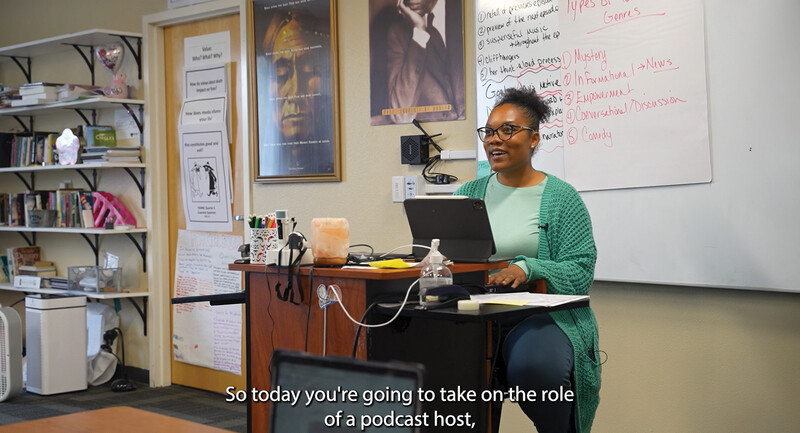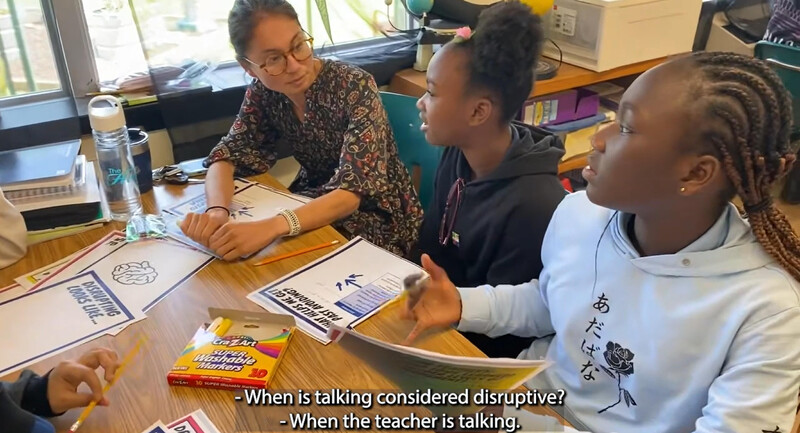Pacing guides. High stakes tests. Standards. The weight of it all can keep us working late at night and weekends. Vetting materials, figuring out what’s important and what’s not. We create a beautiful presentation and push the material out to students who are not all that impressed with our hard work. We have unwittingly outworked and outthought our learners.
Moving students into the fast lane of learning is about the facilitative classroom in which students do much more of the thoughtful, satisfying, rigorous work. First, let’s tackle three of the biggest myths of the active, fast lane classroom.
- The scary (and untrue) one is that active learning lacks structure. Just the phrase “active learning” can conjure up school supplies flying through the air. The truth is that the active classroom is a thoughtfully composed letting go of some of the most serious parts of learning. We deliberately designate the most important parts of learning to students. But since they are allowed some freedom to move around, locate additional materials, collaborate with peers, one can argue that structure is even more essential.
- Students “outgrow” a love of active learning. This is simply not true. (I outline a few studies in the book Teaching in the Fast Lane all the way through college!) Students need to create, solve problems, and collaborate. In fact, one of the most important skills employers are seeking is problem solving and the ability to work in teams. Those are tough skills to learn sitting and listening.
- Active learning is less rigorous, because fun cannot possibly be rigorous. The truth is, academic achievement tends to increase when students are doing the work! Still today, the average student spends the bulk of their school days listening to someone talk. What are students not particularly good at? Listening to someone talk! The passive classroom can be a place in which students and teachers have this unwritten contract, “You leave me alone, and I’ll do the same.” (Tragically, some research indicates that when educators feel the weight of test scores on their shoulder, there is a panicked tendency to lecture longer and speak louder!)
How do we get there? A big decision in planning our learning experiences is this: “What do I need to explicitly teach and what can students learn on their own?” For example, if we are learning about the Great Depression, the teaching component might include how the stock market works, including the concept of what happens to prices when there are no buyers for the stock that we own. The learners then take this information and do something with it, like track stocks they have in their portfolio or create a business news video on the market today. Rather than “push out” all the information on the stock market via a power point, for example, we have thoughtfully provided just what they need to grasp new information.
What does it look like? In terms of structure, there is designated time in each lesson for rich, learning targeted student work. Evidence of learning is apparent from the start of class to the end, and students, peers and teachers can all view progress. In order to allot this time, it’s important to examine current lesson plan structures. Are they lists of “to do’s” or documents that encourage creative planning? Do current structure have recommended times for each component? Does each element of the planning process have a clear purpose? Some guidelines I use in my work in schools are below. These are conversation-starters:
- The opening minutes are the time students retain the most. Their brains are fresh and ready to learn. How are utilizing that time? Are these minutes used for “warm-ups” that have little bearing on new learning? Or, does this time purposefully prime brains for thoughtful, new learning? Is the time appropriate for the purpose? A good rule of thumb: 10% of the lesson.
- Is the explicit teaching portion appropriate in time? There are a wide variety of recommendations here. A good rule of thumb for elementary and middle school students is age +1. High school teach time should not exceed fifteen minutes. (Some researchers say less!)
- Is the close purposeful in gathering data from today’s learning target and appropriate in time? Are students provided feedback on how to grow?
If these three areas above are in sync, the remainder of class time is for students actively working! This work period could include stations, literature circles, collaborative projects, independent research, labs, math practice with a partner, or creating solutions to problems. This is the time that they process information, talk about things, read together, and deepen understanding. This visible work period moves educators to a more facilitative role. We can sit with them, talk about their thinking, and ask probing questions. We can commend something in their work, their drawings, their writing, their conclusions.
Because, after all, it’s their learning, not ours.
To learn more, join me and thousands of other educators at ASCD Empower18, The Conference for Every Educator.








